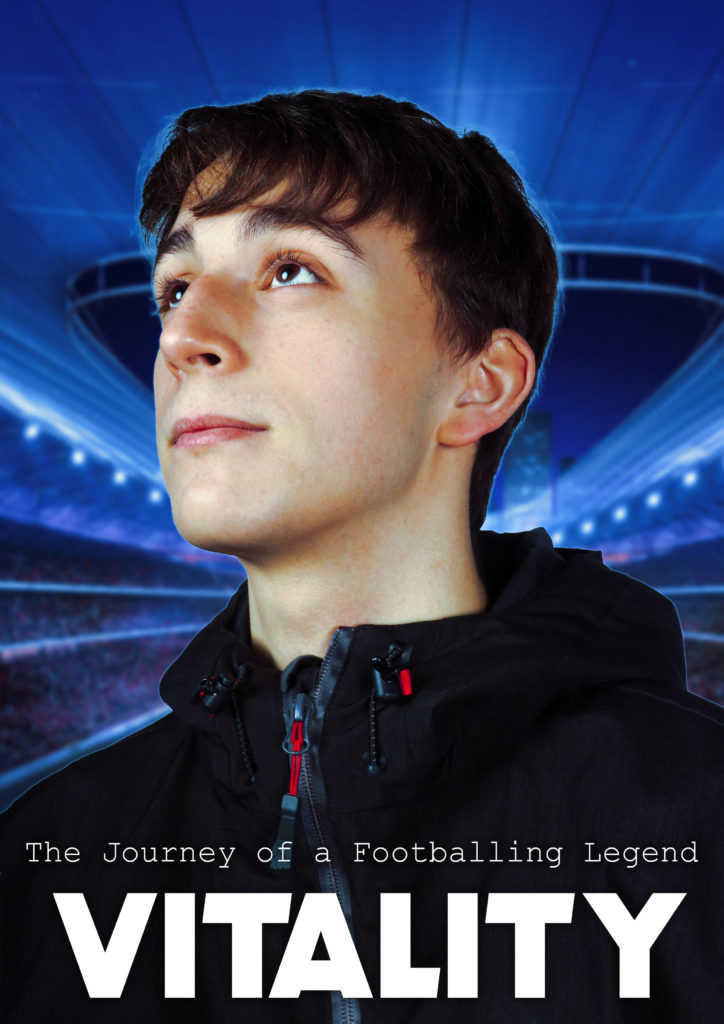
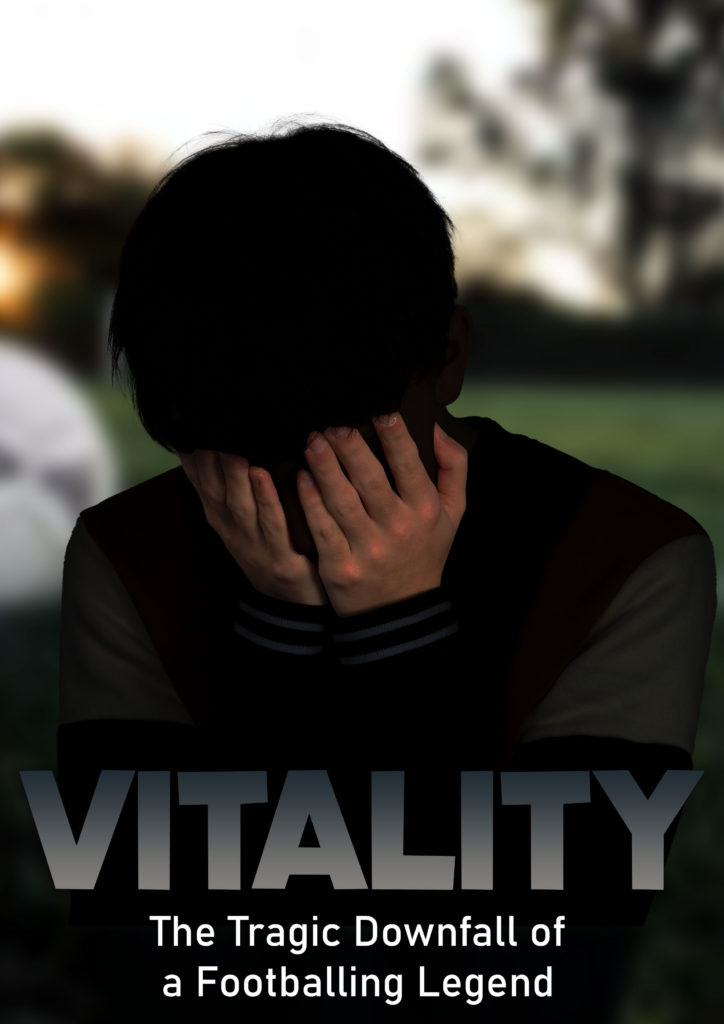


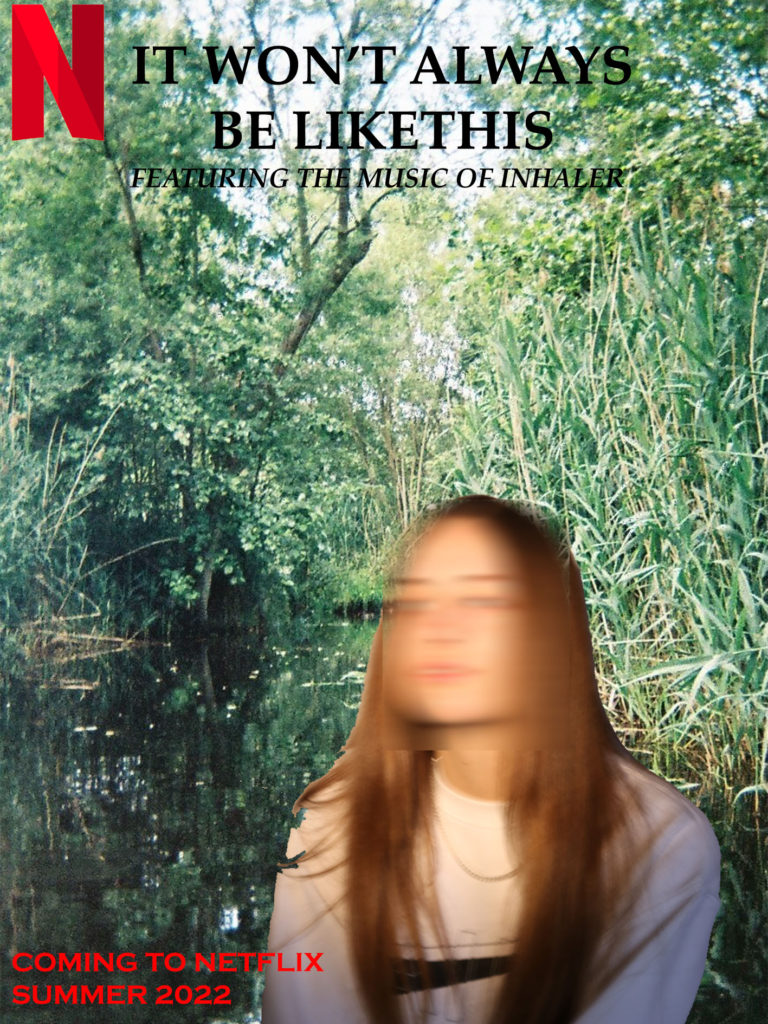
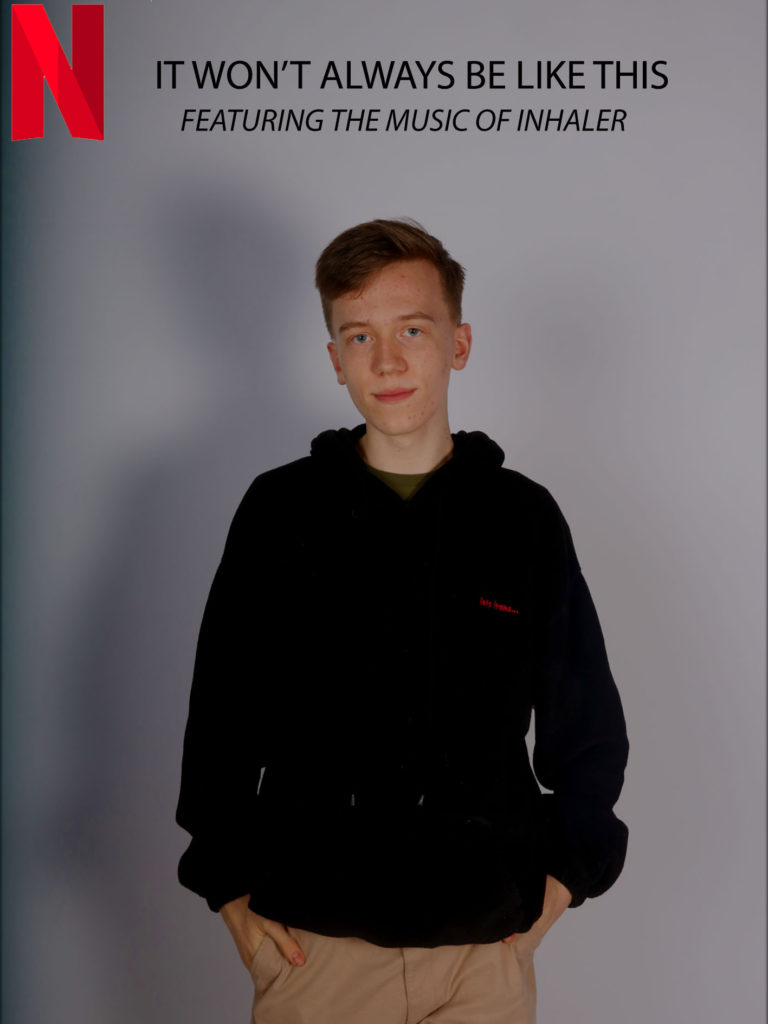

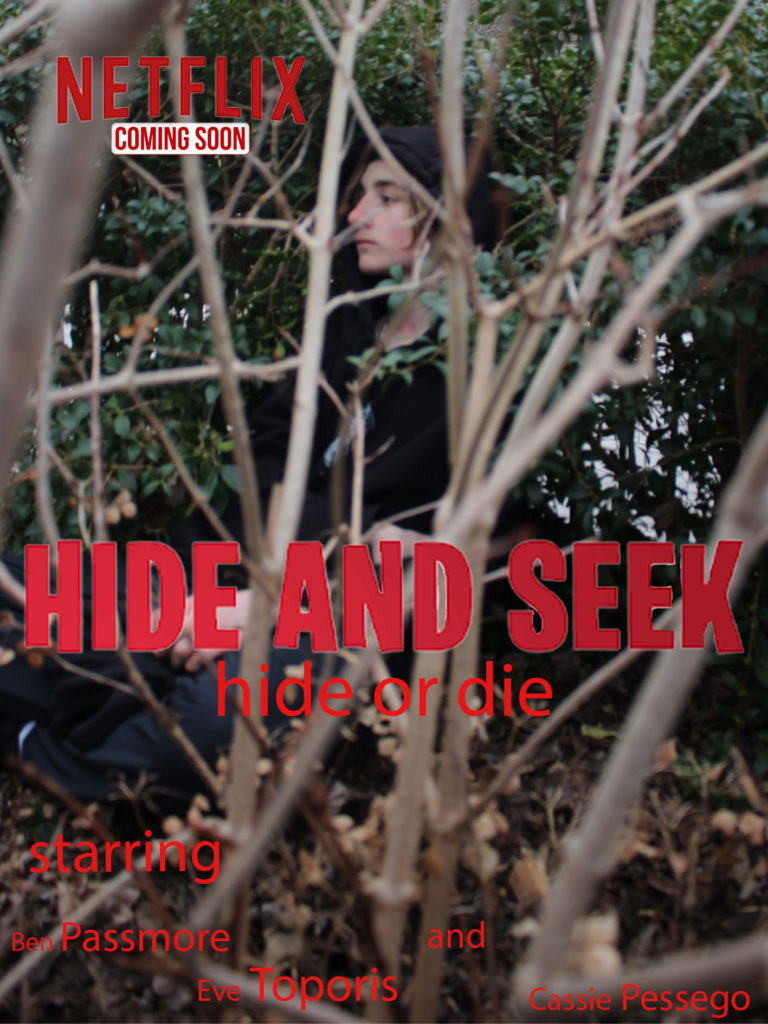
Statement of intent – media
name of film- left on read.
I intend to produce two different posters to advertise my film through including signifiers that link to the narrative I will create and introduce the central concepts, ideas and characters without explicitly revealing the details of the plot. My movie posters will include a character that is a girl in a relationship and is dangerously obsessed with her boyfriend.. I want to produce 2 posters that translate the craziness of her transition from innocent love to stalker. The plot is inspired by a 2000s teen movie and present a very ‘normal’ life the female character lives. I want to represent her on the poster as scary and crazy. I will ensure this image is of a high resolution, so it is the main focal point on the poster. I want the background to obtain essences of a dark reality that goes on in her mind. The poster will be spooky but and psychedelic unlike more dramatic and emotionally movie posters. I like the essence of the Netflix show ‘YOU’ which has a very stalker based, but includes the narratives key objective. The text on my poster will be minimalistic as I don’t want it taking the attention of the central image. I imagine that my posters would be produced by a small, indie company who are owned by a large conglomerate such as ‘Warner Bros’, the two posters would be created for distribution by a streaming platform such as ‘Netflix’ and ‘Amazon Prime Video’. My other poster of my movie will have the same aesthetic of the first poster but from a different perspective. I had in mind maybe them walking away from the back with the chaos in the background. I want my second one to heavier and more interesting on the audience and have a more serious tone to it, she has no idea what she did to be in her position and is a story of her trying to figure out how to deal her struggles.
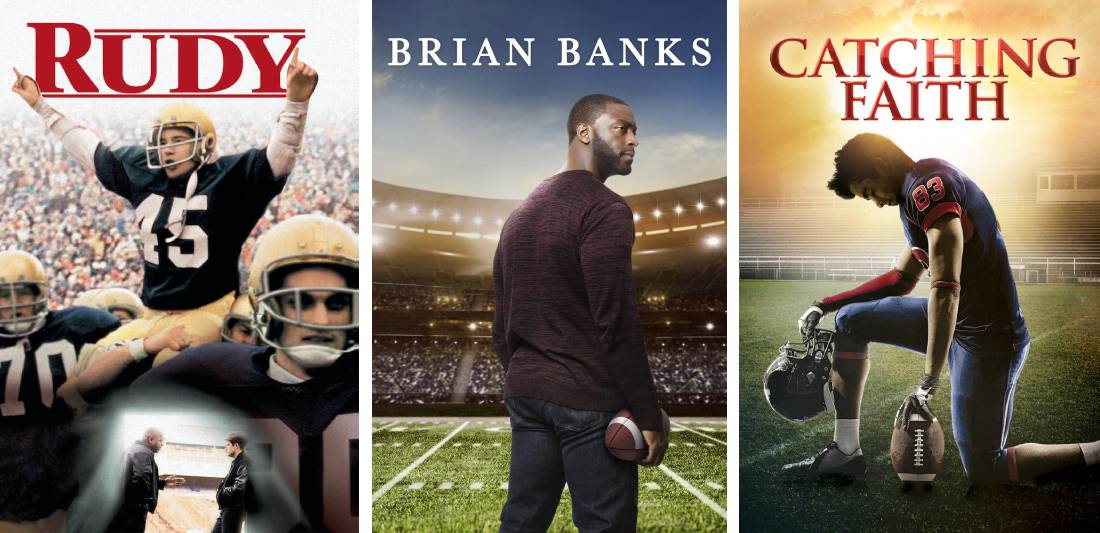
These three posters are part of a collection, and they all contain close up shots of one key dominant signifier. These signifiers show the main characters, being sports players, in a dominant, powerful light and this is reactionary to the audience that would usually consume this kind of product (young to middle aged men). The settings in these film posters are of football pitches/stadiums, and these give connotations of physical activity. The title text is all clearly defined and easy to see, and is often the second sign you will notice after the main character in the centre.

Firstly, this film poster shows a dominant signifier of a sports player, dressed in sports clothing which connotes ideas of physical activity. Unlike the other posters above, however, it contains a lot more text than just the title, such as credits, release date, and the company licensing it. These bits of text are nicely indented to the point that they to not obstruct the view of the dominant signifier, but can be read easily. This creates a paradigm of signs which give information about the film.

This poster shows a similar dominant signifier, but here he is presented in the middle of running, giving connotations of physical activity. The other signs, such as the text, company logo and licensing label are neatly arranged, and the title text makes use of different colours to stand out from the rest of the elements. The number in the title has a different colour to highlight it, as this is a separate edition of the same film series. The signs cover the dominant signifier in such a way that their face is still showed clearly, and his facial expression remains easy to read in the bullseye shot.
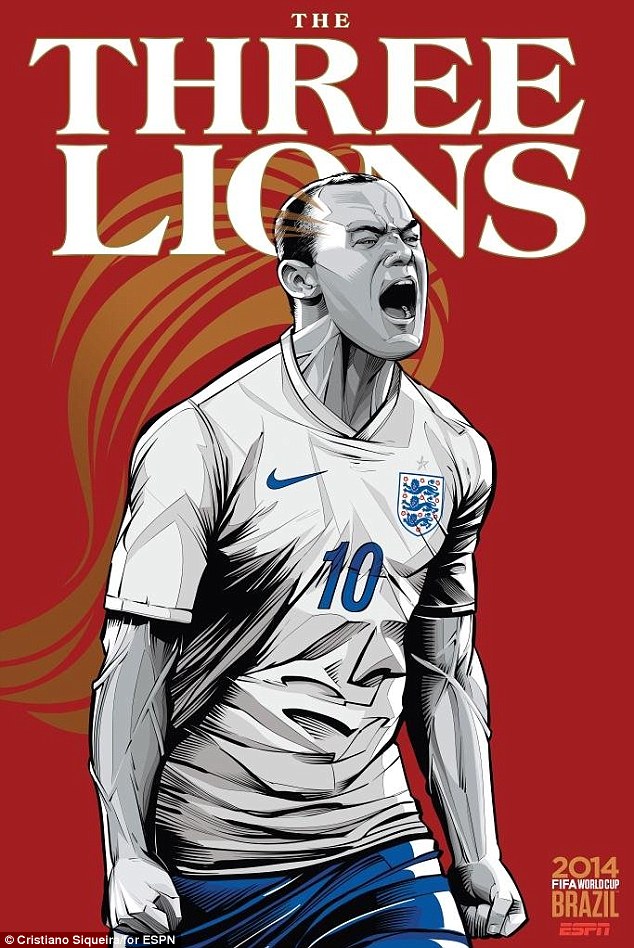
This poster shows once again a single dominant signifier in a similar posture, with details such as copyright information and the event the poster is referencing. The title text, being an icon, is slightly hidden by the dominant signifier. This makes it seem like anchorage and makes it more supplementary than this kind of title text should be, however I think this makes it pleasant to look at.
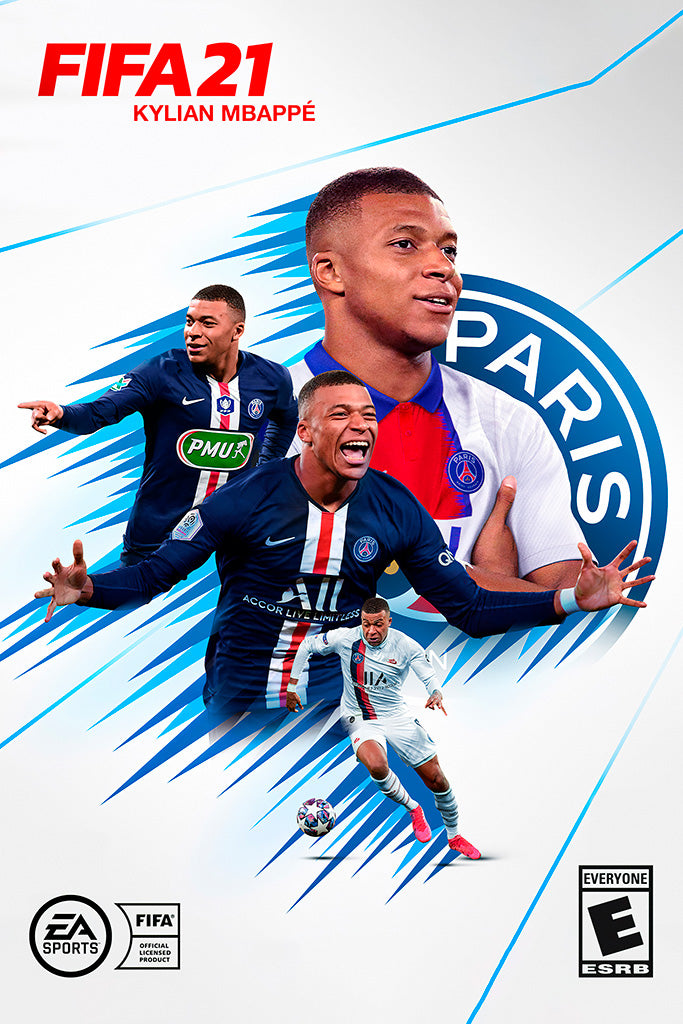
This poster has many images of the dominant signifier, being a football player, partaking in many different sporting actions. They are arranged in such a way that you can easily tell what his facial expressions are, giving connotations of head work and physical activity, and the icons of age rating and company branding are neatly positioned in a way which makes them only relevant if you look for them.
It’s about a poor family and the teen sons parents are struggling to get by, they have one son who wants to become a professional football player but can’t afford to pay for football training so he spends all his time playing street football and playing with his best friend, but his parents want him to get a job to help provide.
In this movie I will have the main character, the hero, being the teen who wants to become a football player. He will have a best friend at the start but then becomes the false hero, he then joins a rival team to his friend after the hero manages to get into a team through very hard work and training and being able to get free training due to his large skill and ability. The false hero will purposefully injure the hero out of spite that the hero is a greater player than him. So the hero has to go back home and start working for his family for a while. After being injured for a while we have a dispatcher (a coach) who convinces him to play again and carry on his training. To where he then gets scouted by a premier league team and this will be the anagnorisis where he earns enough money to provide for him self and his family.
The film will be funded and produced by Warner Brothers. It should have a least a mid level budget due to the simple nature of the story not needing many high level filming attributes or techniques. The poster will have the main hero at the front holding the football in his hands or at his feet, with his friend next to him but slightly behind to indicate his insignificance compared to the main hero and as also a slight foreshadow of his false hero intentions.
The genre of the film will be a feel-good type idea that focuses on a classic and conventional base story line following ideas of the Tripartite narrative structure. The genre would loosely be based on the films techniques and genre of “Blinded By the Light” where he young teenager faces antagonists and hardships to make his dream come true of becoming a professional football player, making his parents proud and taking them out of poverty.
A really good way to think about NARRATIVE STRUCTURE is to recognise that most stories can be easily broken down into a BEGINNING / MIDDLE / END. The Bulgarian structuralist theorist Tztevan Todorov presents this idea as:
In the beginning of a movie such as Harry Potter, his equilibrium is that he lives in a foster home under the stairs and they are disrespectful and unkind to him, then begins the disruption where he finds out he is a wizard and gets sent to Hogwarts when now Voldemort wants to kill him, lastly, there’s the new equilibrium where it goes back to the characters being happy once again and the conflict is over.
A more sophisticated application of Todorov considers and recognises that stories are constructed in ways that test and subvert the three act narrative structure outlined above. A more sophisticated application of Todorov might also consider:
Sometimes there may also be an audience who expect action quickly and have a short attention and quick boredom span, so, Condensed equilibriums:
This structural approach could also be referenced to Freytag’s Pyramid:
exposition, inciting incident, rising action, climax, falling action, resolution, and denouement as illustrated below.
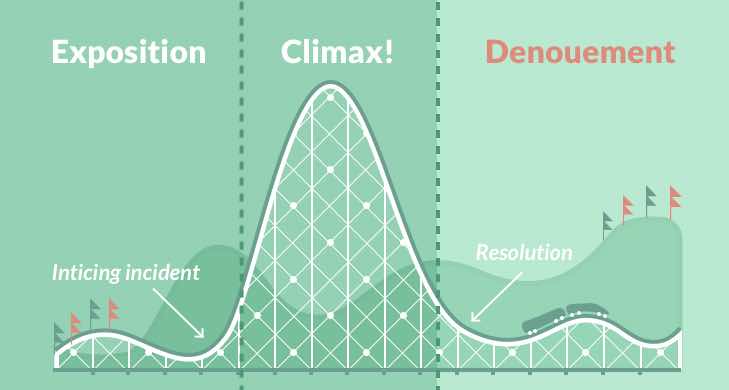
His theory is about narrative structures, as his work (based around an analysis of fairy tales) suggests that stories use STOCK CHARACTERS to structure stories. That is not to say that all characters are the same, but rather to suggest that all stories draw on familiar characters performing similar functions to provide familiar narrative structures.
Simply, Vladimir Propp theorised that although characters may seem different, there are 8 stock character types that they follow that relates to their function in the movie and their personalities.
CHARACTERS FUNCTION TO PROVIDE NARRATIVE STRUCTURE; Here are the 8 Stock Characters:
As Turner makes clear ‘these are not separate characters, since one character can occupy a number of roles or ‘spheres of action’ as Propp calls them and one role may be played by a number of different characters’
However, Propp proposed that his list of stock characters are structured into a narrative that has 31 different functions that play an important role in organising character and story into a plot. Without going into detail for each, overall they can be divided into the following sections:
Peripeteia– a sudden reversal of fortune or change in circumstances, especially in reference to fictional narrative.
Anagnoresis– the point in a play, novel or movie in which a principal character recognizes or discovers another character’s true identity or the true nature of their own circumstances.
Catharsis– the process of releasing, and thereby providing relief from, strong or repressed emotions.
Linear– progressing from one stage to another in a single series of steps
Chronological– (of a record of events) following the order in which they occurred
Sequential– forming or following in a logical order or sequence.
Circular structure– In a circular narrative, the story ends where it began. Although the starting and ending points are the same, the character undergo a transformation, affected by the story’s events
Time based– any artwork that has both physical and temporal dimensions. Contemporary artworks that include video, film, slide, audio, or computer-based technologies are referred to as time-based media works because they have duration as a dimension and unfold to the viewer over time
Narrative arc- literary term for the path a story follows. It provides a backbone by providing a clear beginning, middle, and end of the story \/
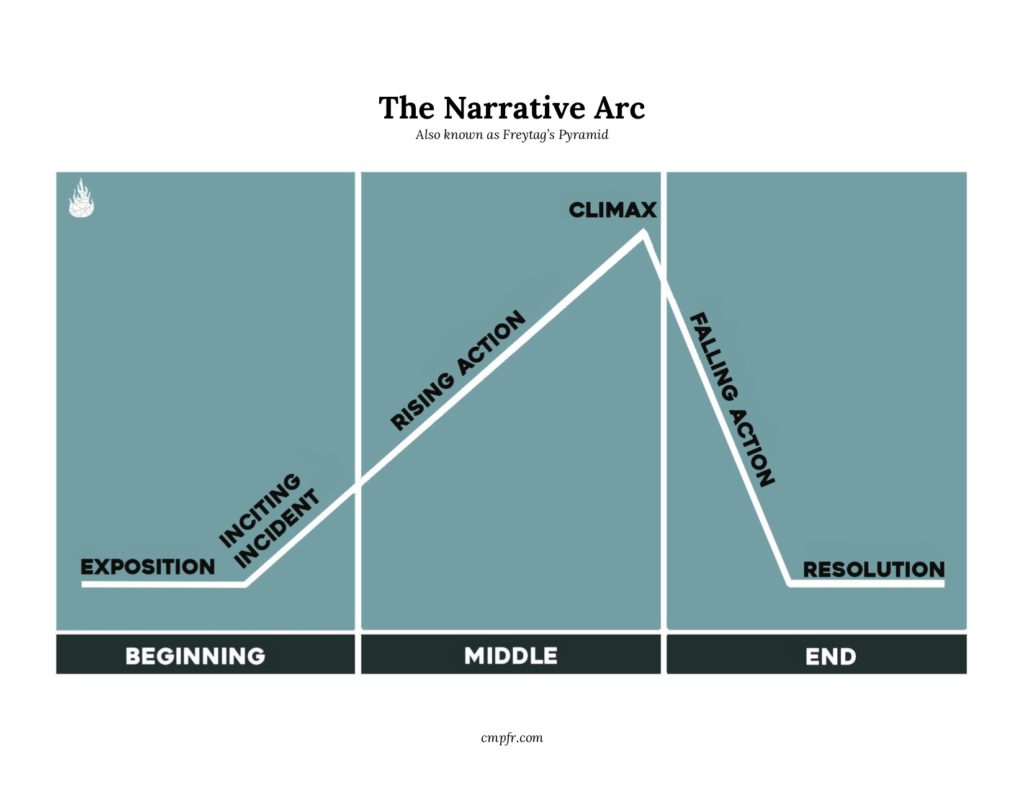
Freytag’s Pyramid /\- Devised by 19th century German playwright Gustav Freytag, Freytag’s Pyramid is a paradigm of dramatic structure outlining the seven key steps in successful storytelling: exposition, inciting incident, rising action, climax, falling action, resolution, and denouement
Exposition– a comprehensive description and explanation of an idea or theory
Rising action- starts right after the period of exposition and ends at the climax
Synopsis- a brief summary or general survey of something/an outline of the plot of a play, film, or book.
Condensed Equilibrium- Propelling narratives towards moments of immediate disruption to hook audience engagement
Metanarratives- Provide the audience with moments that draw attention to the fact that they are watching a story.
Todorov– most stories can be broken down into a BEGINNING / MIDDLE / END. Structuralist theorist Todorov presents this idea as Equilibrium, Disruption, New Equilibrium
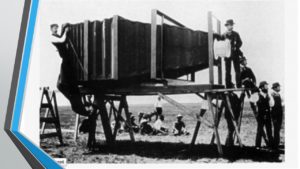
Ok so some more production work! Yippee!
Your MOVING IMAGE NEA is centred around a CROSS-MEDIA PROMOTIONAL CAMPAIGN that asks you to produce the following media products:
As you know I have already brought forward the Film Poster production to accommodate both the AS Photography mock exam and my own absence. Which gave you 3 days in the TV studio and the last 2 days in class (without me) completing your products. Similarly, we put in place some time to complete the Film Sequences production as we looked at the language of moving image. The web design production is similarly staggered as I am away for a few days during this period and our classroom is being used by photography.
As such, although it would be best practice to complete all of your work and upload to the blog by Friday 8th April. However, I will not start marking this work until Monday 18th April. This therefore gives you plenty of time to finish.
Movie Synopsis
A group of teenagers rob a house. Unknown to them, the house belongs to a crazed killer who will stop at nothing to get revenge.
Statement of Intent
I have decided to choose the horror genre because the filming resources available to me are most well-suited to filming a horror. The lack of diverse set locations, actors, and filming techniques available to me means that genres such as dramas, comedies, and action are off-limits. Horrors on the other hand are usually set in one location (a house, a woods, e.t.c.), and commonly use a group of teenage actors, which makes them easier to film.
I intend to make a creepy, fun, and satirical horror movie, which has various classic horror tropes and themes which run throughout. In my film, a group of teenagers in need of cash plan to rob a secluded house. Little do they know, the house they are robbing belongs to a manic killer who hates being wronged. Mid-way through their robbery, the man arrives home and the group has to try to escape what looks like certain death.
On my first poster, I’ve included the house that belongs to the villain of the movie. It is very isolated, which creates a feeling of desperation and isolation. It is also foggy, representing mystery and ‘fear of the unknown’. The isolated house trope is very common in horror movies, which is part of the reason why I have chosen it. I’ve also tinted the picture slightly red, symbolising danger. Thomas Du Fue (who plays the villain in my story) is lurking ominously behind the house, which represents how his presence haunts the movie. I pictured him reaching out toward the camera as if reaching out to the viewer. The title ‘Don’t Move’ has spots of blood on it, which suggests that blood will be shed in the movie. His face is partially covered in the first poster, and then almost entirely covered In the second poster, this makes the audience associate his character with darkness and ambiguity. My second poster is also tinted red, which again symbolises danger.
The dominant signifier of my first poster is the house, which appears clearly in the forefront of the poster.
My movie includes many stereotypical horror tropes, however, approaches them in a satirical tone.